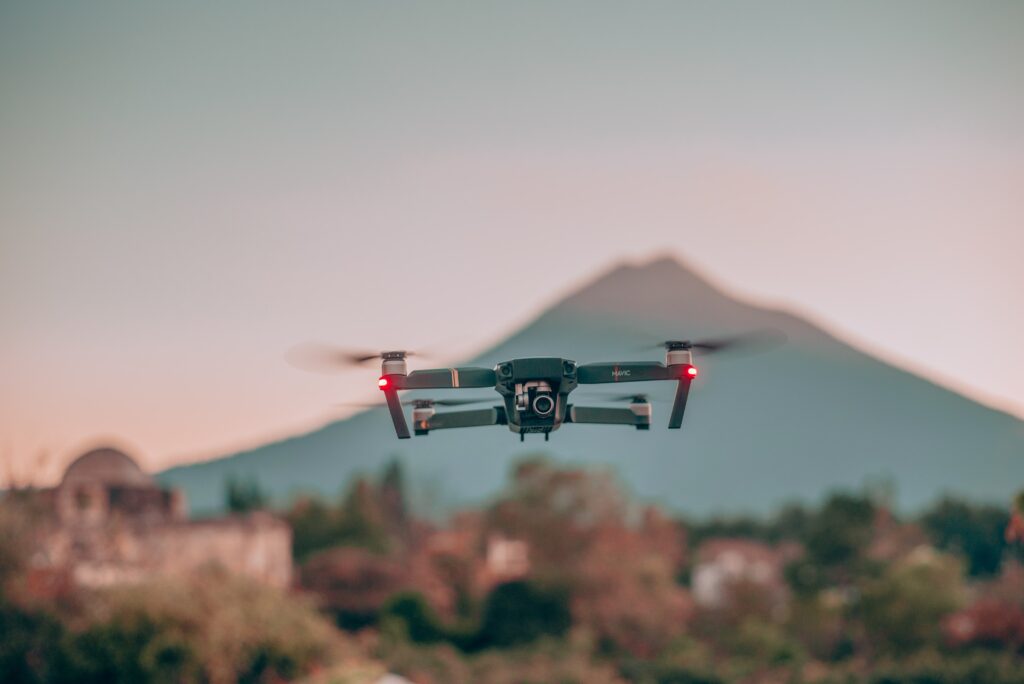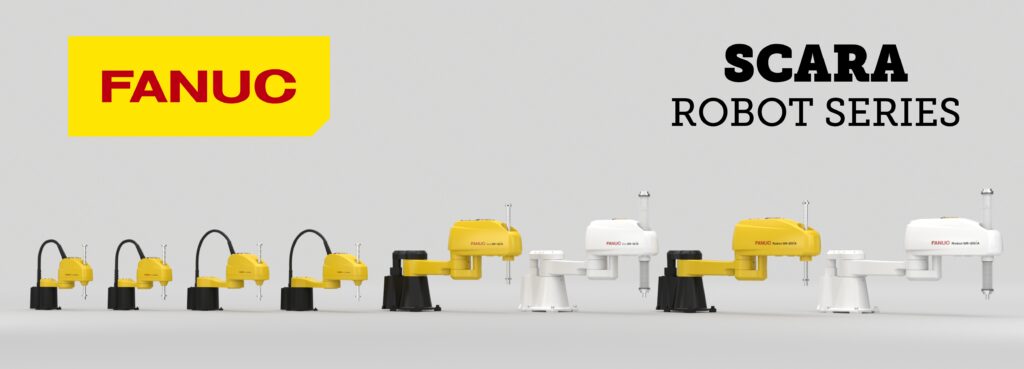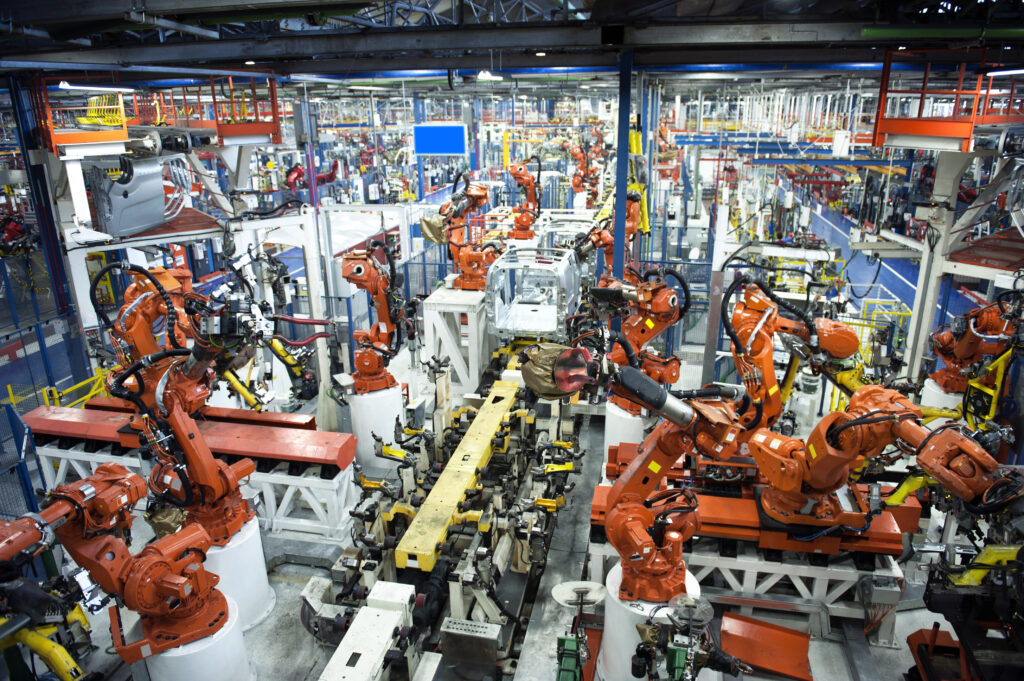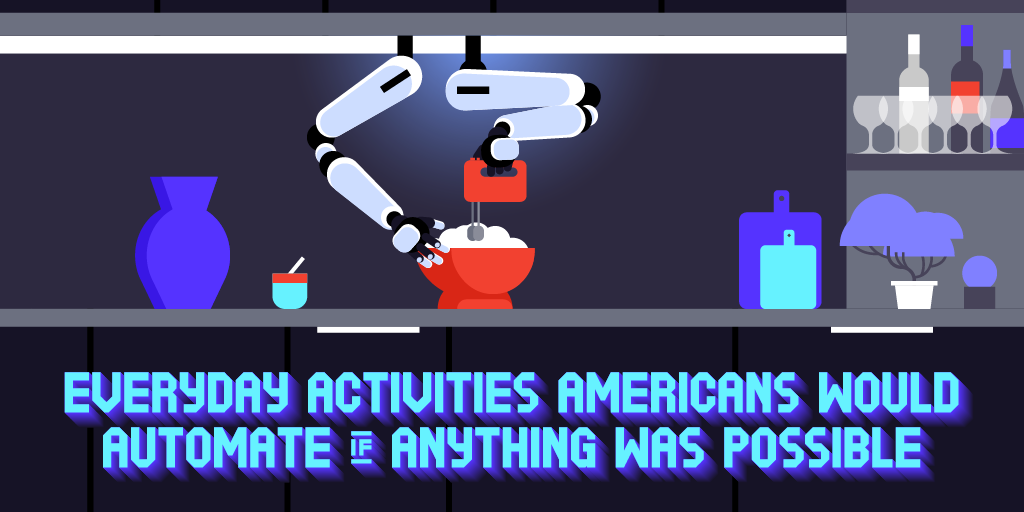
If you grew up in the 90s, chances are you’re familiar with the 1999 Disney movie, Smart House, in which the Cooper family enjoyed all manner of lifestyle automations from their home’s then-unheard-of virtual assistant until it was tampered with and went haywire.
While the technological marvels depicted in the film—voice-activated locks, lights, entertainment, temperature control, home security, and more—were fantasy at the time of the film’s release, we can replicate nearly every automation from the Coopers’ smart home with real technology today. Ok, maybe not the floor absorbers.
As automated routines, virtual assistants, and the Internet of Things saturate our homes and many modern industries, we wanted to see whether Americans embrace the change or reel against it. In other words, how far would they take artificially intelligent automations if anything were possible—like it was for the Coopers in Smart House?
To find out, we surveyed over 900 Americans on their current smart home devices and habits, the fictional automations they would be the most likely to adopt, and their thoughts on the future of increasing automation in all aspects of society. Read on to learn more.
Automated, Actually

According to NPR, there were already 20 million virtual assistants in U.S. households in 2017. Four years later, our data shows that an astonishing 91% of respondents are using a virtual assistant at home.
When we asked survey respondents which digital helper they primarily use, the top two contenders were Google Assistant (39%) and Amazon Alexa (36%). Surprisingly Apple’s Siri didn’t compare to these giants and was relegated to only 13% of respondents’ homes.
The usefulness of virtual assistants increases dramatically when paired with other smart devices on the Internet of Things. With many of us spending more time indoors over the past year, we aren’t surprised to see smart TVs and smart speakers topping the list of the most common smart devices Americans currently use.
The following four smart devices are more practical in nature. Based on our results, smart lights, security cameras, locks, and thermostats are all popular devices for automating home security and comfort.
We can see that Americans are readily accepting artificial intelligence into their lives as a key component of daily activities. Virtual assistants like Google and Alexa are now dimming lights, playing music, forecasting the weather, watching over empty houses, and much more while Americans focus on other matters.
But how far is too far when it comes to allowing technology to take over aspects of our daily lives?
Automating Virtually Anything
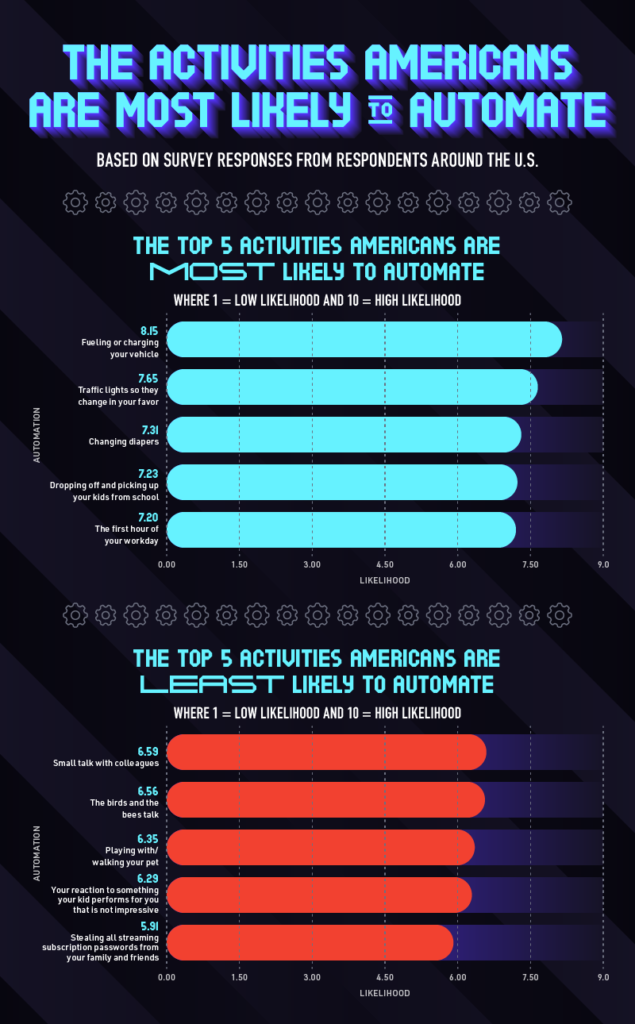
To find out which fictional automations are most appealing to Americans, we asked respondents to rate a list of made-up automations on a scale from 1 to 10, with 1 meaning low likelihood and 10 meaning high likelihood.
The results surprised us. Americans are more excited than not for every automation we proposed. But of course, some are more appealing than others.
Respondents were most likely to automate fueling or charging their vehicle. Maybe after a year of working from home, stopping at the gas station is a relic of past commutes that Americans are not excited to return to. Who wouldn’t want their vehicle to automatically fill up with gas or recharge it with electricity!
On the other end of the spectrum, respondents were least likely to automate stealing their family and friends’ streaming subscription passwords. Yet even as the least likely automation, the activity scored a 5.1 out of 10, meaning respondents were still more likely than not to try it out.
Interestingly, respondents were more likely to automate facetime with their kids than with their fur babies. Playing with or walking pets (6.35) scored lower than dropping off and picking up kids from school (7.23) and changing diapers (7.31).
Automating Slices of Life
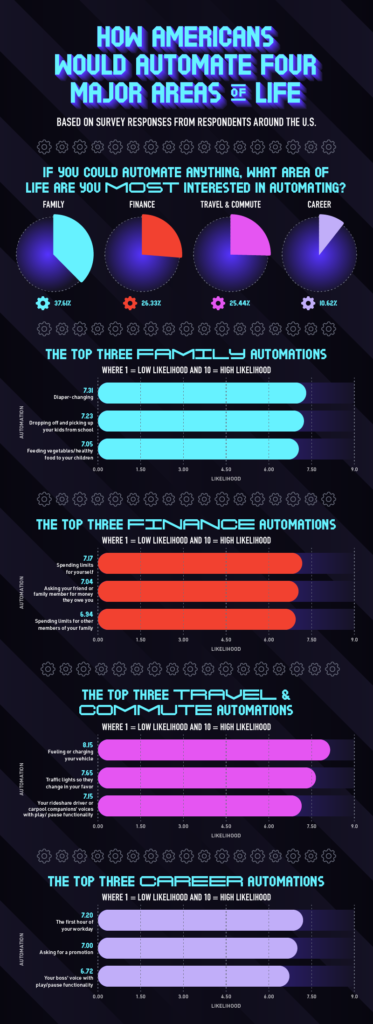
As suspected, Americans are most interested in automating family activities, with 37.6% of respondents agreeing. A quarter of respondents would automate their finances instead, and another 1 in 4 respondents are all about automated travel and commutes. Career was the least likely area of life respondents would automate, with just 10.6% choosing it.
There were, however, automations that appealed to respondents in all four areas of life.
Diaper-changing, carting children around, and pleading with kids to eat healthy food were the top three activities parents would delegate to artificial intelligence if they could.
In terms of finance, respondents were more prone to automate limits for their own untrustworthy spending habits (7.2) than spending limits for other family members (6.9).
Commuting to work is a struggle for many Americans, whether they are driving themselves or riding with others. In this category, the top automations were fueling their vehicle, changing the traffic lights in their favor, and interestingly, muting their carpool companions or rideshare drivers on a whim!
Lastly, respondents were not without want for automating certain aspects of their careers. They couldn’t be bothered to get up for the first hour of their workday, instead wishing a robot would stand in while they catch a few extra Zs. As asking for a promotion can be awkward and challenging, respondents want to automate it instead. And while we aren’t sure how many employees think their boss’ voice is grating, we know respondents would automate their boss with play/pause functionality if they could!
After learning that Americans are all about automating their lives when it comes to fictional technology, we had to find out how they feel about the very real future of artificial intelligence.
The Stormy Future of A.I.
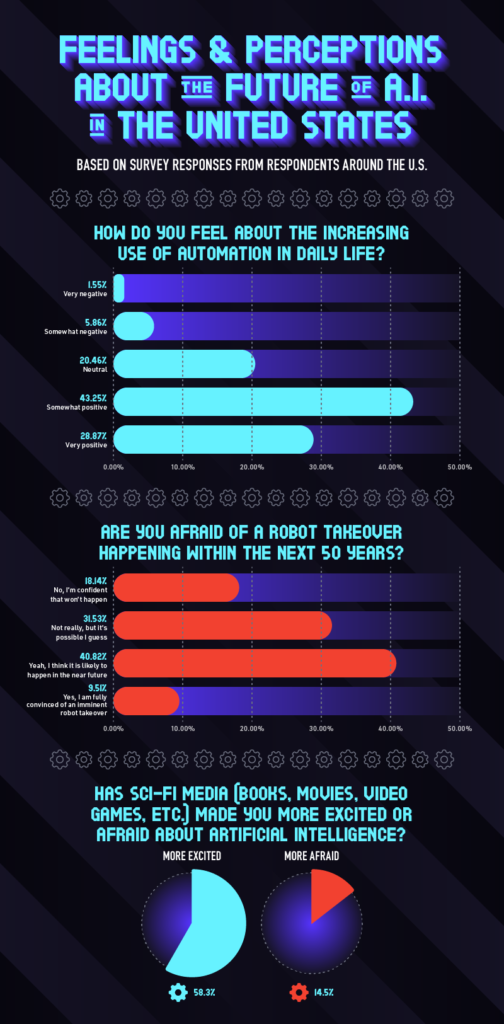
Automation is becoming more ubiquitous, and Americans are ok with that. Nearly 3 in 4 respondents feel somewhat or very positive about the increasing use of A.I. in daily life and another 20% assume a take-it-or-leave-it approach. Only 7.4% of respondents harbor negative feelings about automation increasing in our daily lives.
But despite an overall positive perception of the outlook of automation, most respondents have not ruled out a robot takeover. In fact, more than 40% believe that one is likely to occur in the next 50 years! Just 18% are certain that robots won’t rise up against us before 2071. It seems Americans are willing to put a lot at risk in return for the casual conveniences afforded by automation and the Internet of Things.
However, this grim expectation of rebellious robots comes into focus when viewed through the following lens. Science fiction media plays a role in making 58% of respondents more excited for the future of artificial intelligence. Suddenly, a robot takeover doesn’t sound so bad when you have a T-1000 or Neo on your side.
Whether the robots rise up or not (they won’t), automation represents much more than conveniences within the home. It is essential to the smooth functioning of many industries, offering increased productivity, efficiency with materials, product quality, employee safety, and more. That’s why we supply factories with state-of-the-art automation equipment and replacement parts. We’ll even make the repairs ourselves to ensure you’re up and running in no time.
Updated on May 27, 2021 by Admin GoFishDig
